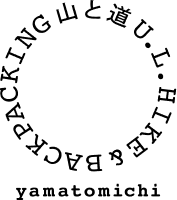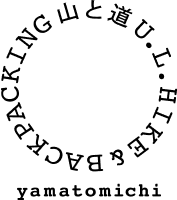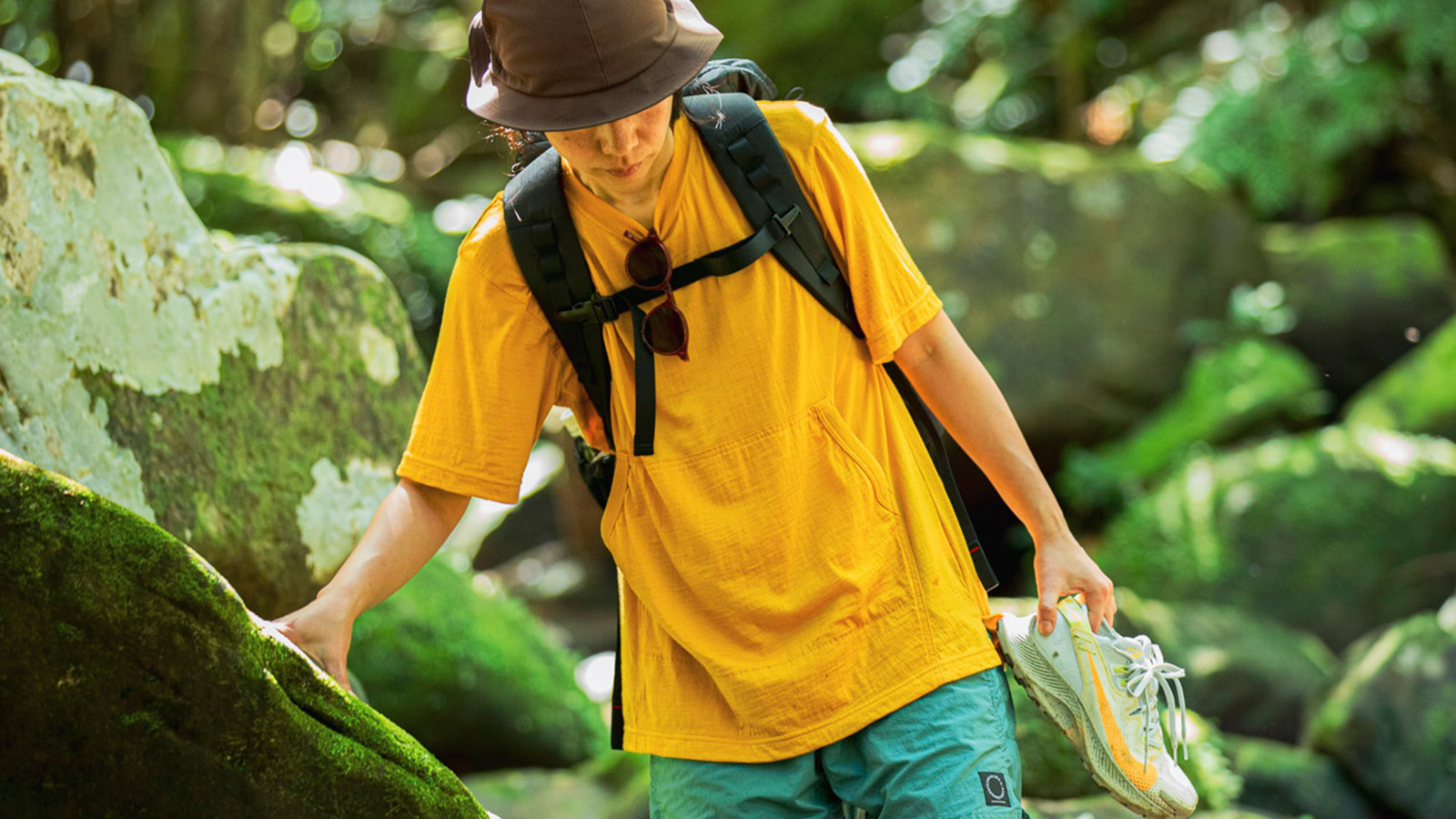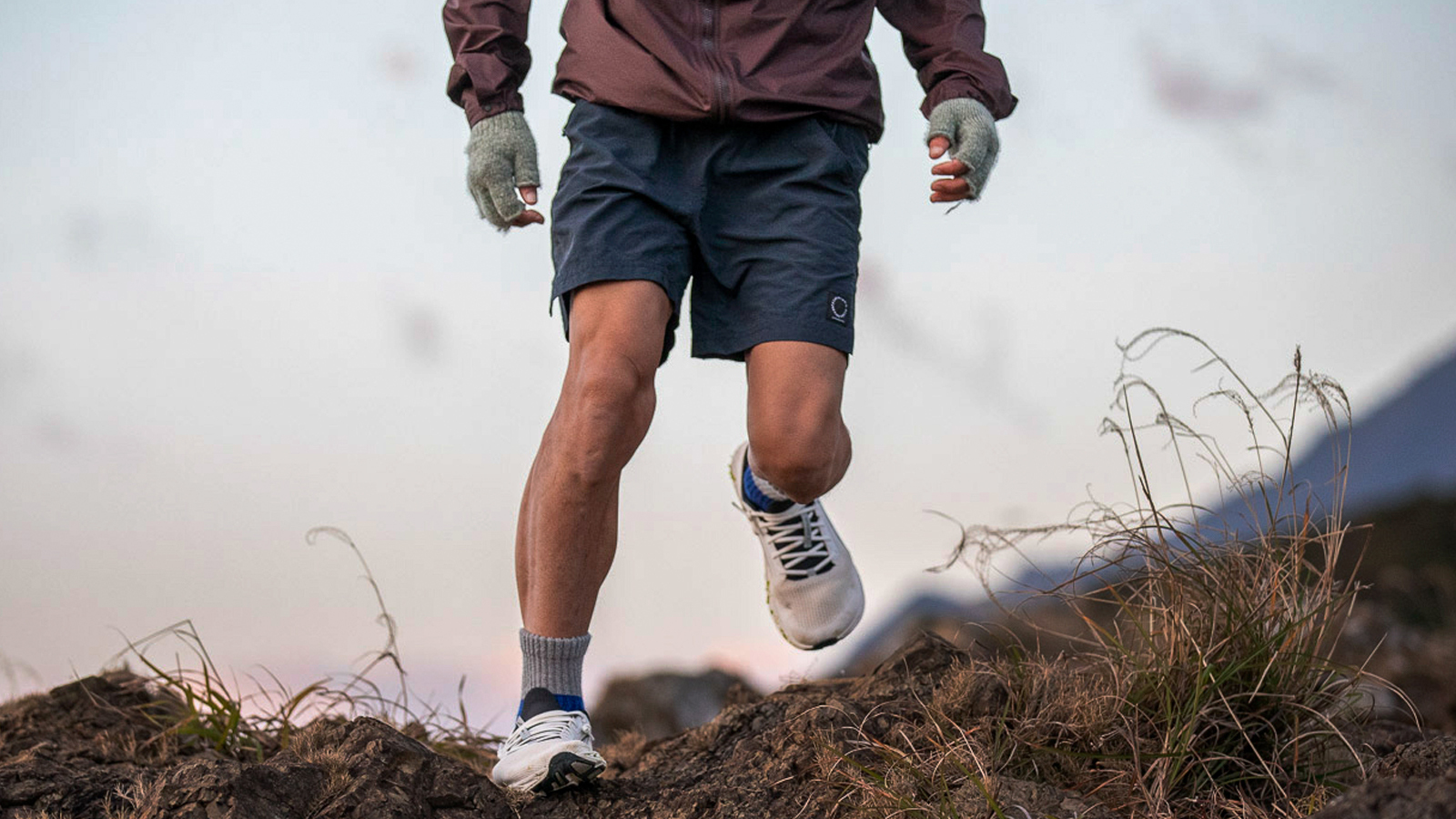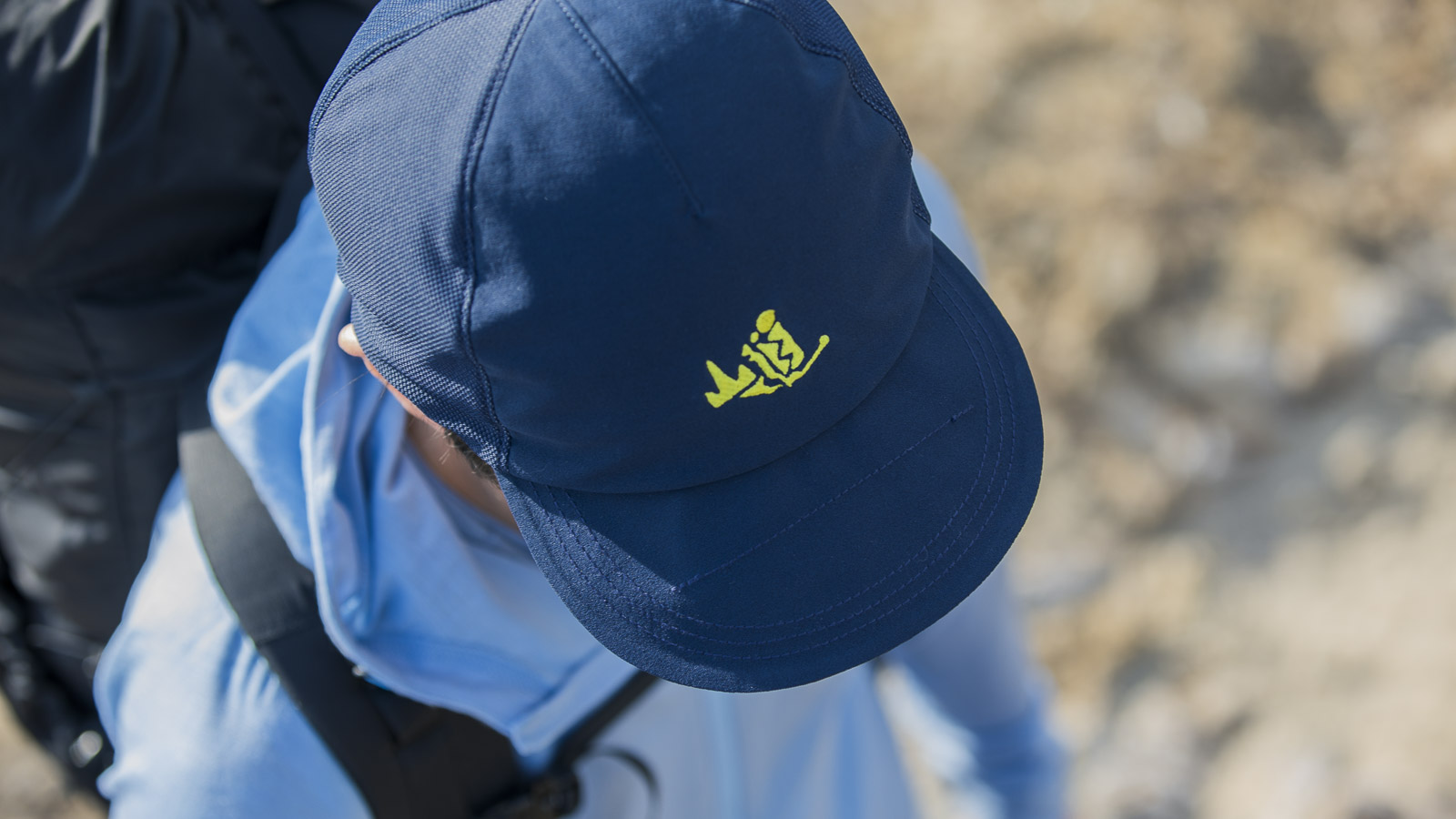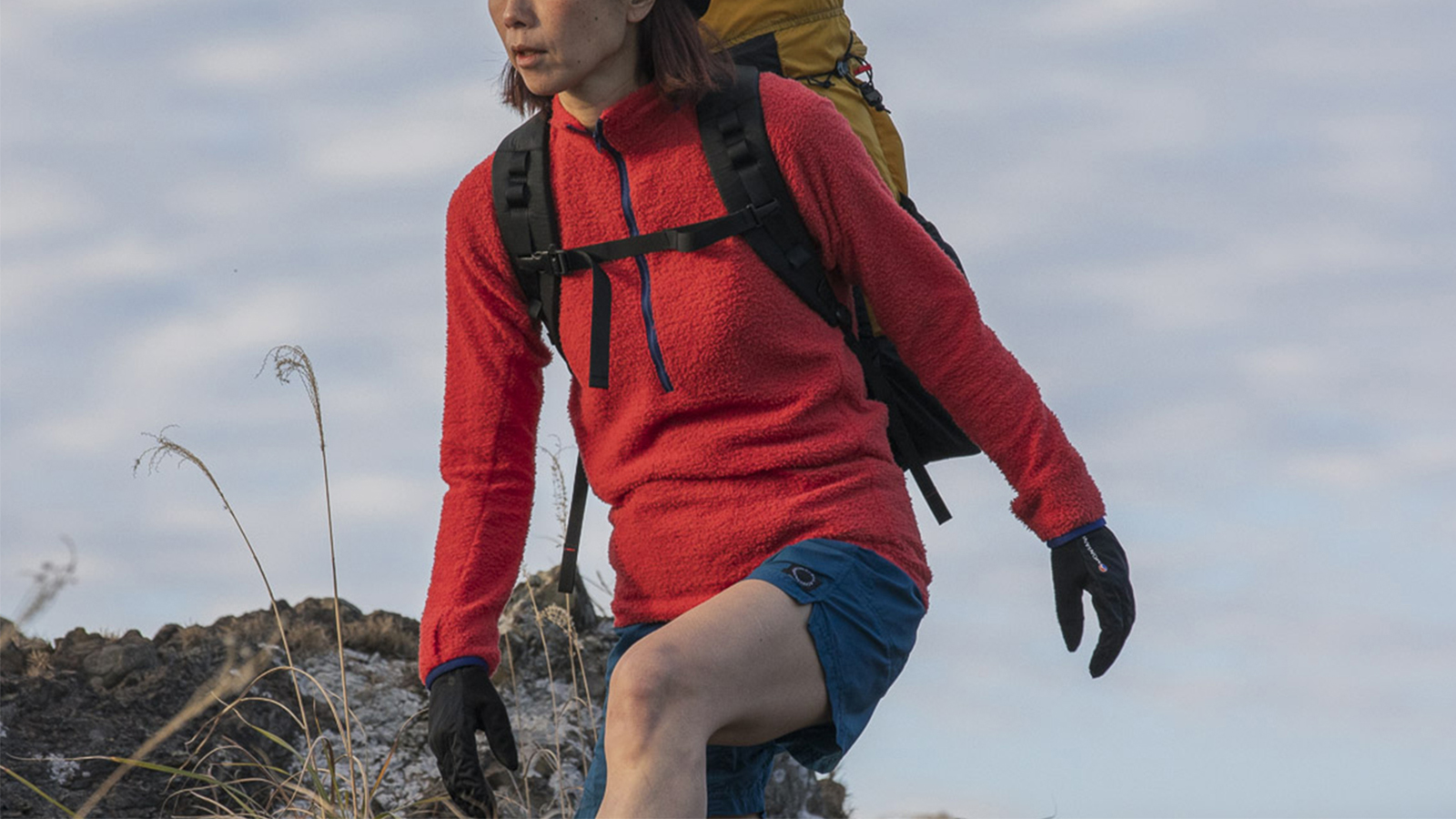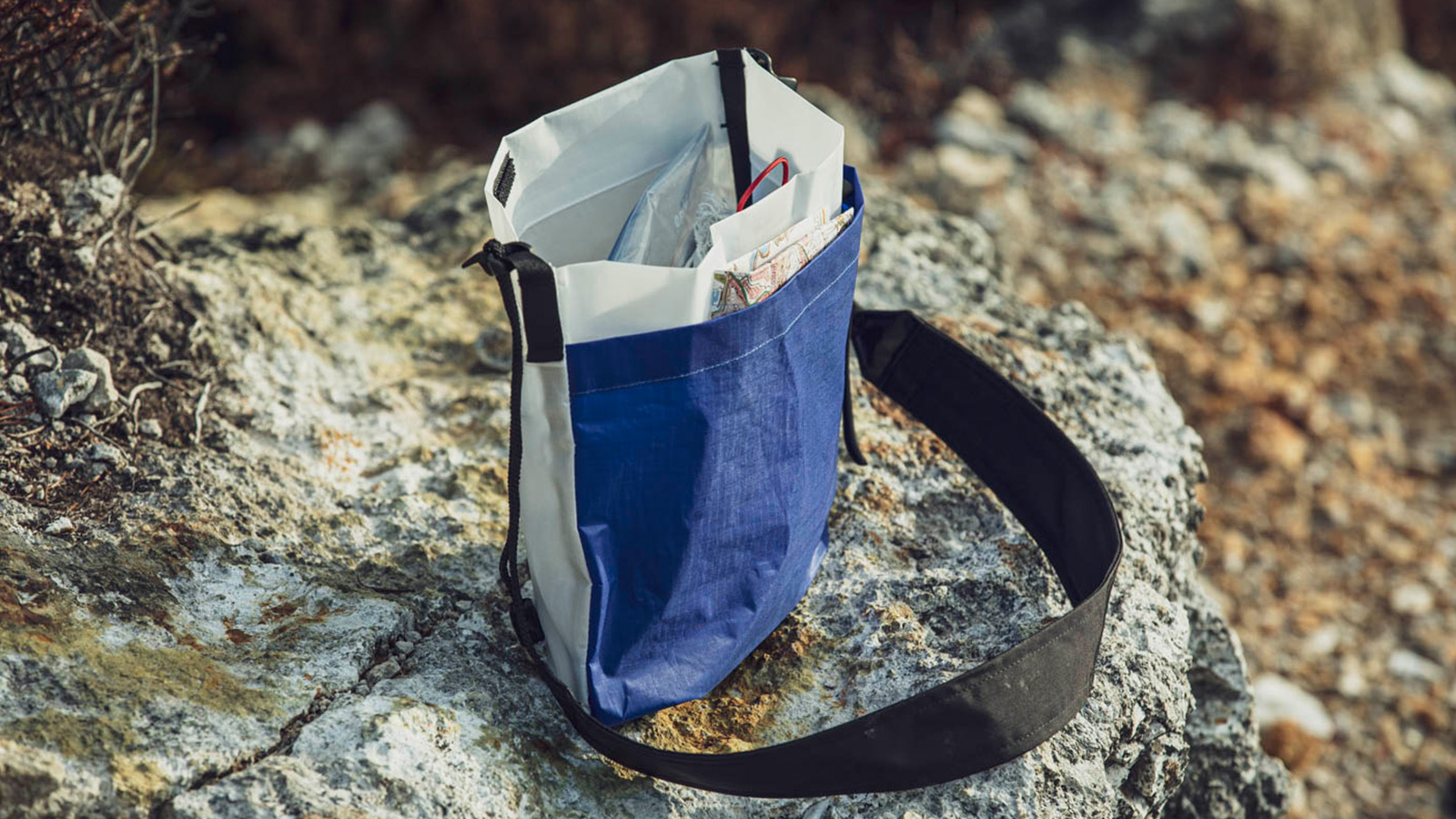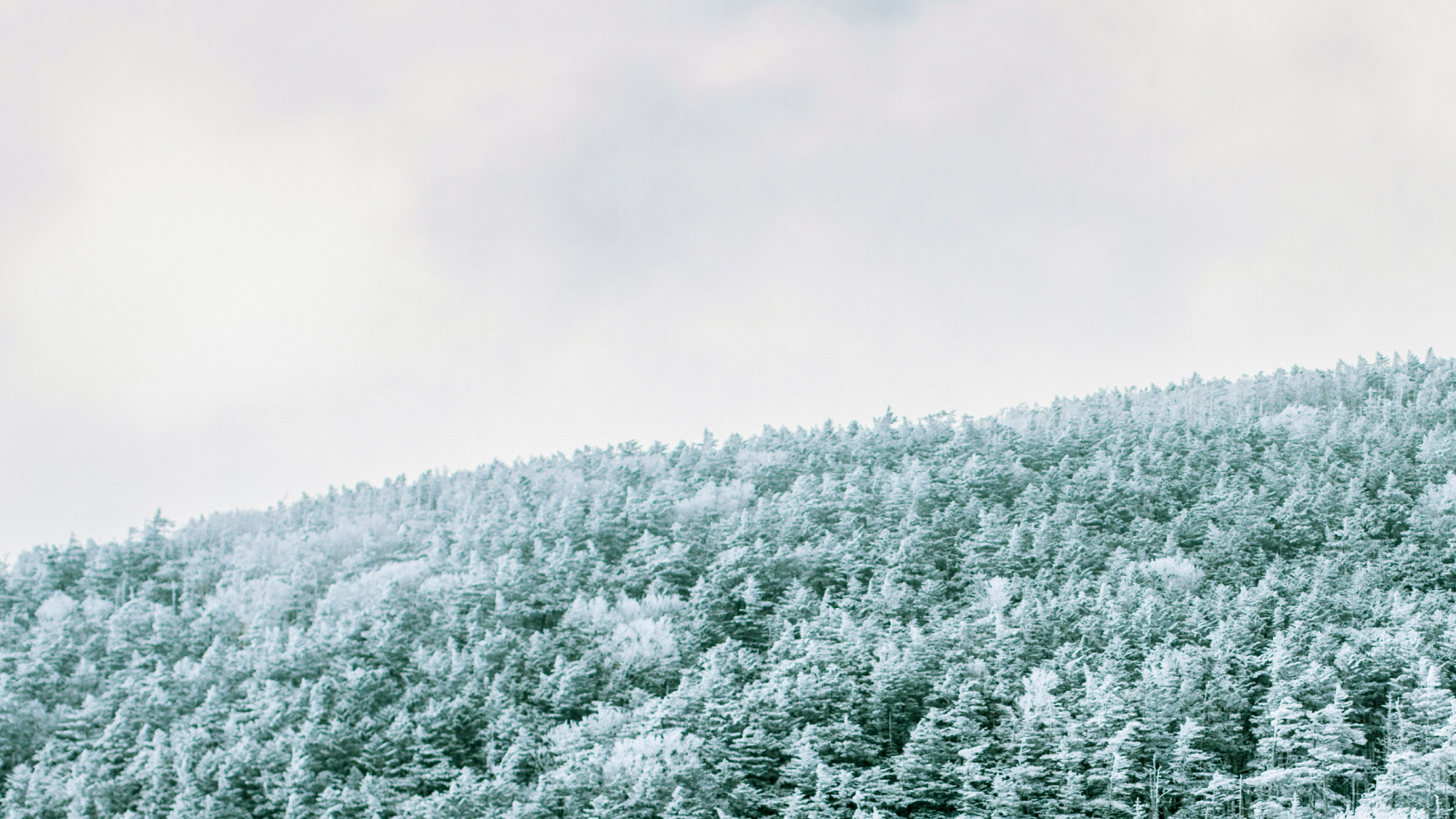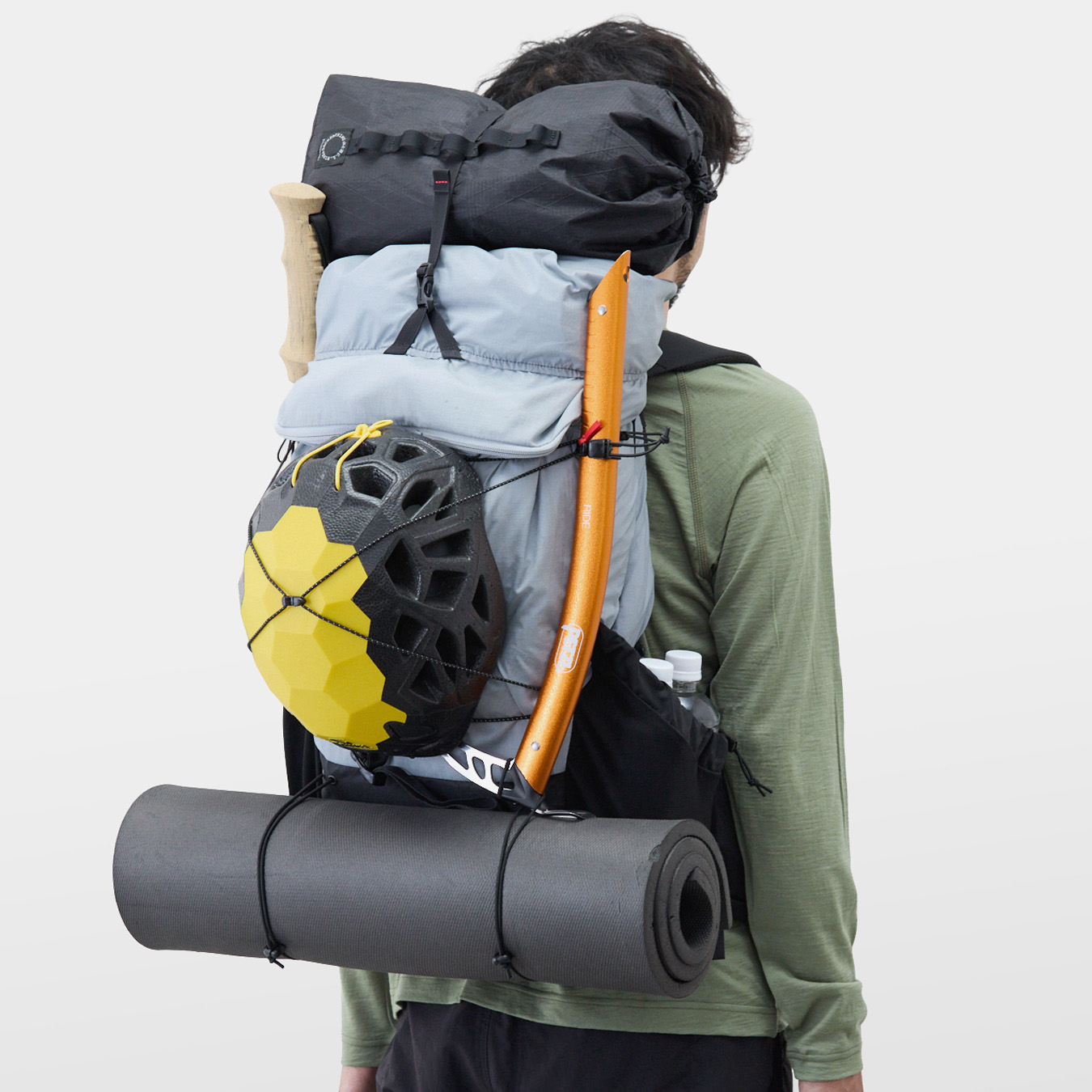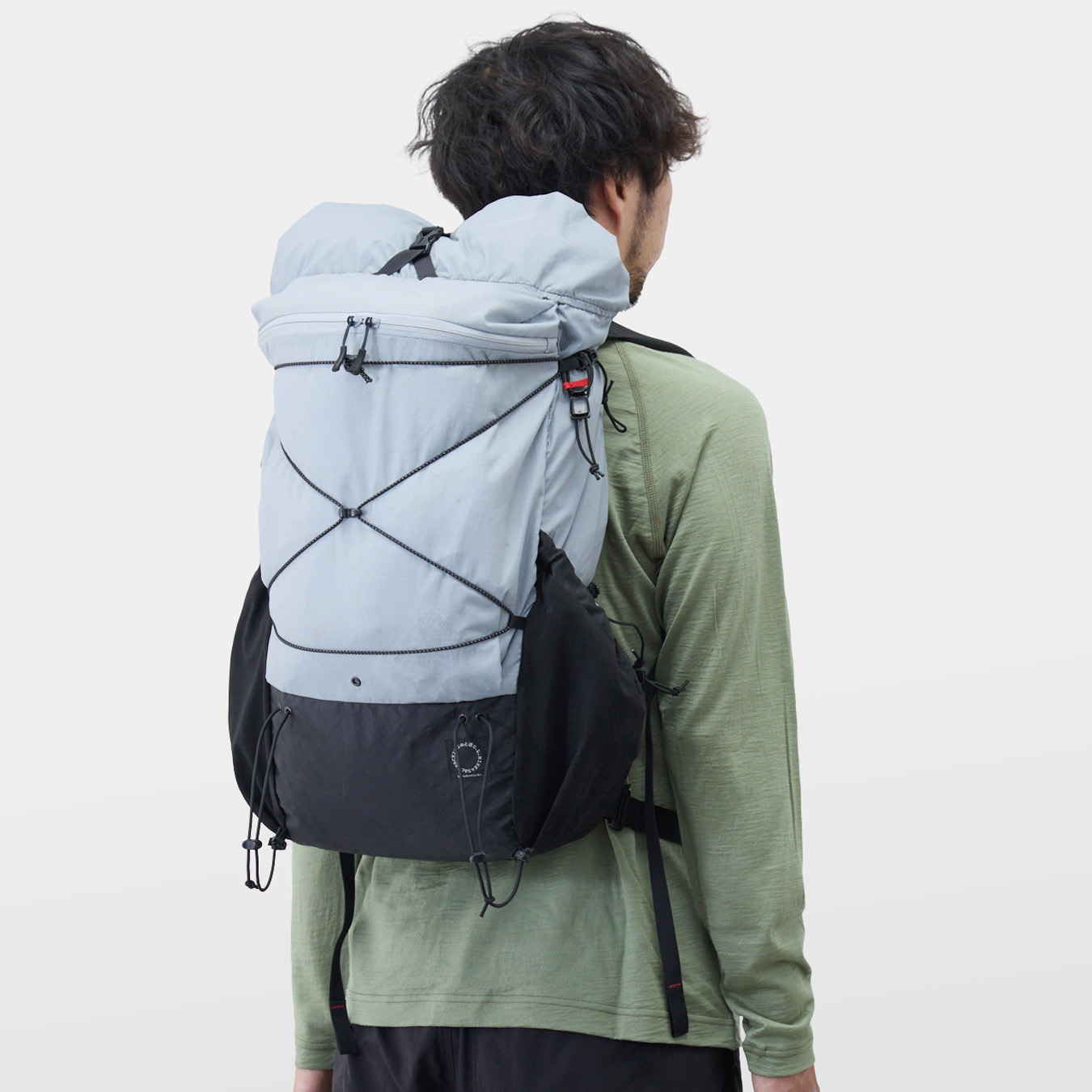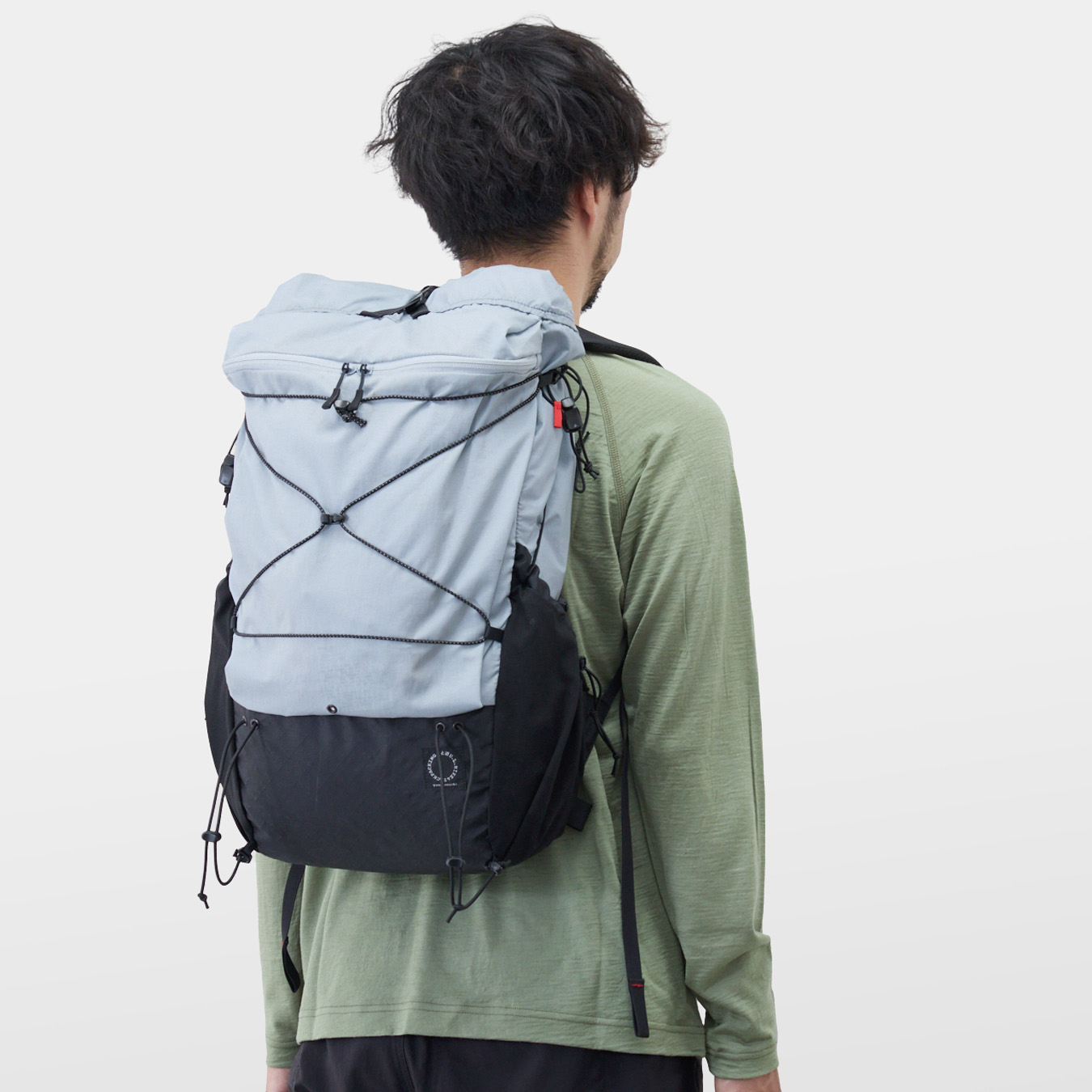Pertex®︎21RS-PC 137g/㎡
TS White
Technoforce®︎ Steel 98g/㎡
ECOPAK EPX200 200g/㎡
TS White
Technoforce®︎ Steel 98g/㎡
Size M 376g (Without Accessories)
Size L 392g (Without Accessories)
TS White
Size M 360g (Without Accessories)
Size L 378g (Without Accessories)
Size L 28-32L
Hip Belt
Reflective Bungee Cord
Repair Tape
- Introduction
- The standard Japanese ultralight backpack
- Product story
- From Neighborhood to snowy mountains
- Product story 2
- Designing with depth
- Form and function
- Carry the load
- Highly expandable
- Anatomy of MINI
- Integrated Minimalist Pad
- How to carry
- Options
- Material
- Pertex®︎07RS-PC
- Pertex®21RS-PC
- Technoforce® Steel
- ECOPAK EPX200
- Size guide
- Notes before use
- Fabric water resistance
- DEET
- Instructions
- Care instructions
- Care instructions for Technoforce® Steel
- Repair
- Replacement parts
Introduction
The standard Japanese ultralight backpack
With a maximum capacity of 32L, our MINI delivers everything you need for anything from day hikes to overnight adventures—all at just 360g. Designed to shift the load to the upper body, it frees your waist for unrestricted movement, making it perfect for tackling Japan’s rugged, undulating trails.
The pack is made from two key materials: our proprietary* co-developed fabric with UK-based high-performance textile brand Pertex—featuring a strategic mix of lightweight, supple 70-denier and 210-denier fabrics—and Technoforce® Steel, a 100% ultra-high-molecular-weight polyethylene material renowned for its exceptional strength, used exclusively on the front pocket and bottom.
Evolved through numerous updates since its launch, the MINI has matured into the standard for ultralight backpacks in Japan.
*For more details about the fabric please see our news article.
*Note: The Technoforce® Steel (TS White) model uses a different material and is priced at ¥36,000 (tax included).
Product story
From Neighborhood to snowy mountains
I designed the MINI, Yamatomichi’s second backpack, to be as simple, lightweight, and easy-to-use as possible.
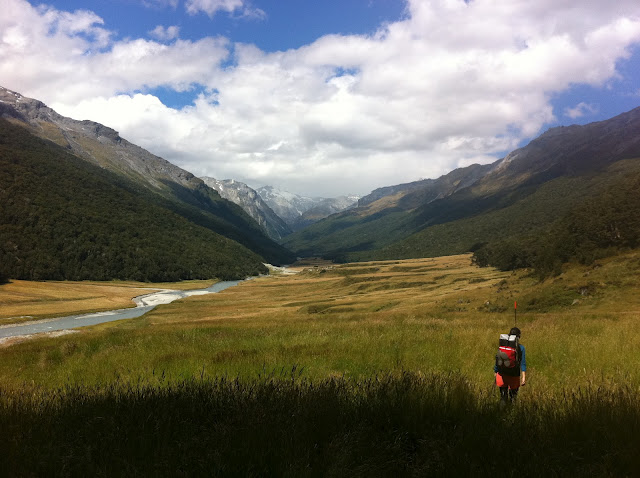
Photo by Akira Natsume, New Zealand Cascade Saddle Route 2012
Inspired by the classic Ray-Way backpack, by Ultra Light Hiking pioneer Ray Jardine, our MINI is designed to carry the main load on the shoulders only leaving your waist comfortably free. If the load is properly distributed in the upper areas around your shoulder blades and chest, most people will have no problems comfortably carrying up to 8 kilograms without using the waist for support. This frees your waist and allows for free and more comfortable movement when hiking.
Many conventional small to midsized backpacks have thin and flimsy shoulder straps, causing too much stress on the hikers’ shoulders. These packs are not properly designed to distribute the load around the chest equally, although they might be lightweight. On the contrary, MINI’s shoulder straps are designed to avoid the load to concentrate on the shoulders even with a heavy load. I tested numerous different strap designs to find the optimum hardness and thickness of the straps.
If you try it on, I am sure you will feel the firm and comfortable shoulder pads effortlessly distributing the load throughout the whole upper body around the shoulder blades and your chest. While the MINI is designed to carry up to eight kilograms comfortably, I believe that the pack can hold even up to ten kilograms while avoiding too much stress on the shoulders.
Unlike many typical ultralight packs with iconic mesh front pockets, MINI is equipped with the zippered front pocket made of X-Pac for the Japanese rainy climate. The pocket is not completely waterproof but highly water-resistant with a water repellent zipper, keeping the items inside dry in light rain.
The MINI holds about 25 liters in volume, but will expand to about 30 liters due to the spacious roll-top should you need to carry a tarp of light shelter for an overnight hike or even longer with proper planning and equipment selection.
So that’s why I believe that the MINI is our most versatile backpack in the Yamatomichi lineup. I use it anywhere from a stroll around my hometown to snow hiking and will keep testing and improving the backpack along the way.
Product story 2
Designing with depth
To create a more thoughtful, collaborative approach to fabric development, we turned to Pertex with an idea: what if we made a fabric specifically for backpacks?
Meeting Pertex for the First Time
By the time I had become obsessed with hiking and before founding Yamatomichi, Pertex was already well-known as a go-to brand for lightweight, high-performance fabrics in technical outdoor gear. Our first real encounter came around the time we started Yamatomichi, when my wife and I visited a Pertex trade show.
We didn’t know that attendance was by appointment only. Completely unaware, the two of us just showed up without a reservation.
The staff seemed a bit surprised to see us at first—but rather than turning us away, they listened with genuine curiosity. Mr. Taka, the representative we spoke with, admitted later that we were the first people ever to show up unannounced. But he found our story interesting and gave us his full attention. He still laughs about it to this day.
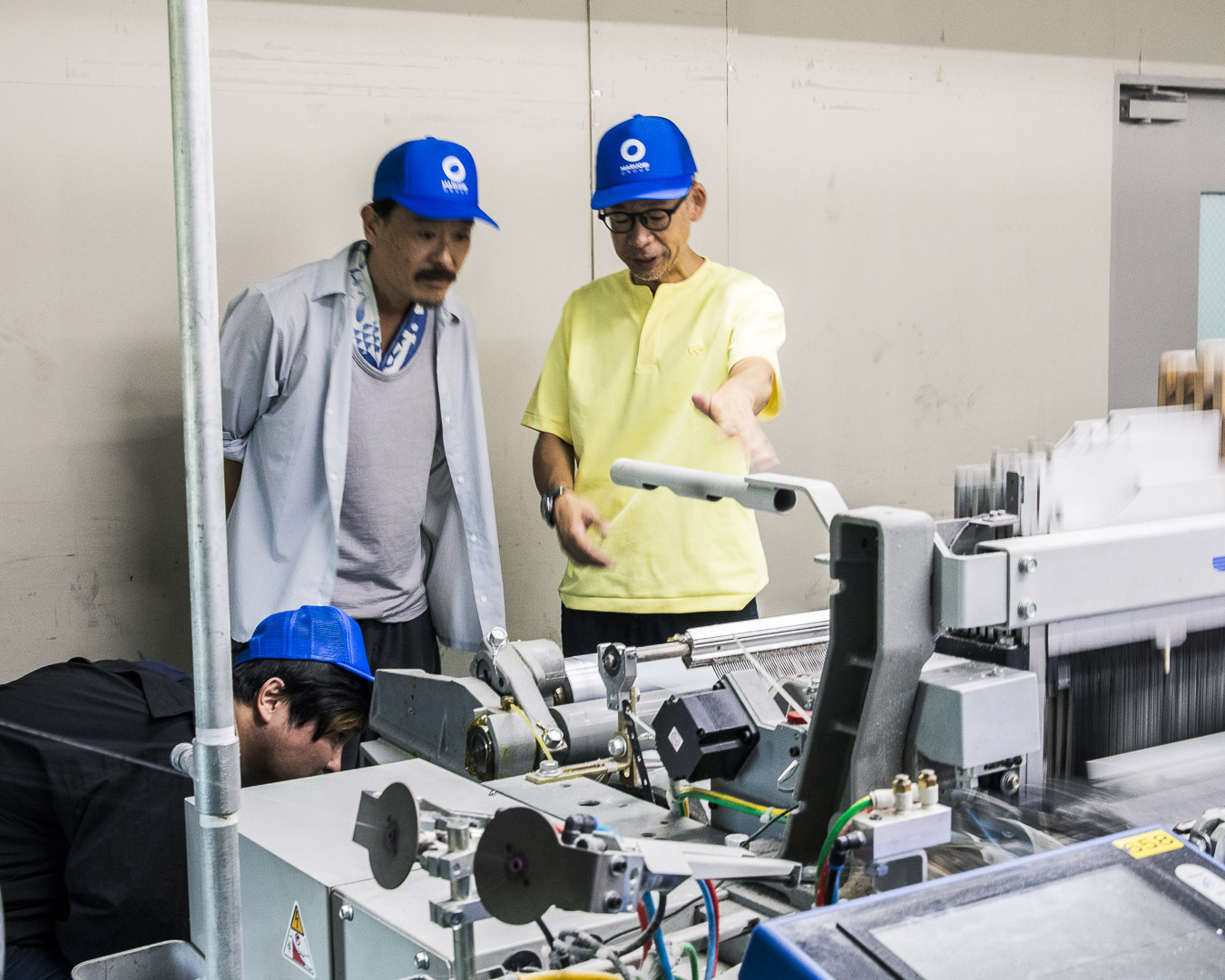
Right: Mr. Taka from Pertex. Left and center: Yamatomichi product team members Hirono and Nakagawa (photo taken during a factory visit).
We started by using existing Pertex fabrics, but things changed when we asked them to help develop a fabric for our DW 5-Pocket Pants. Taslan nylon, the fabric we were using at the time for our 5-Pocket Pants, lacked stretch and had a tendency to stick to the skin when sweaty. To solve that, Pertex created a custom fabric just for us.
Since then, we’ve worked with them to develop a range of original materials focused on lightness and function. Today, nearly every Pertex fabric used in Yamatomichi products is designed specifically for us.
An idea worth weaving
At a Pertex trade show one year, while browsing their latest lightweight fabrics for apparel, we were once again struck by the depth and precision of their high-strength materials. That moment sparked a new idea—if Pertex were to develop a fabric for backpacks, it could lead to something truly unique.
A first for Pertex
Thanks to the trust built over years of collaboration, Pertex agreed to take on the challenge. It was a first for them—developing a fabric specifically for backpacks marked a completely new direction beyond their established lines like Shield or Quantum.
One of the most memorable decisions in the process was their choice to use nylon 6 instead of the typically stronger nylon 66. This allowed for a different balance of strength, texture, and weight. Additionally, by dyeing all components at the same factory, they achieved a consistent color tone across different fabric types—bringing visual unity to the final product.
The result is a fabric that goes beyond technical performance. It offers a refined handfeel and tonal richness that gives each backpack a distinct, elevated finish.
Through this collaboration with Pertex, we’re continuing to explore new and meaningful ways to approach design and materials.
Form and function
Carry the load
The MINI is built to hold up to around eight kilograms of pack weight (total weight including food, water, gear, etc.) and comfortably distribute the weight in the upper body area around the shoulder blades and chest without relying on waist support.
The MINI’s design thus frees your waist from the load and ensures comfortable hiking around the rugged Japanese mountains.
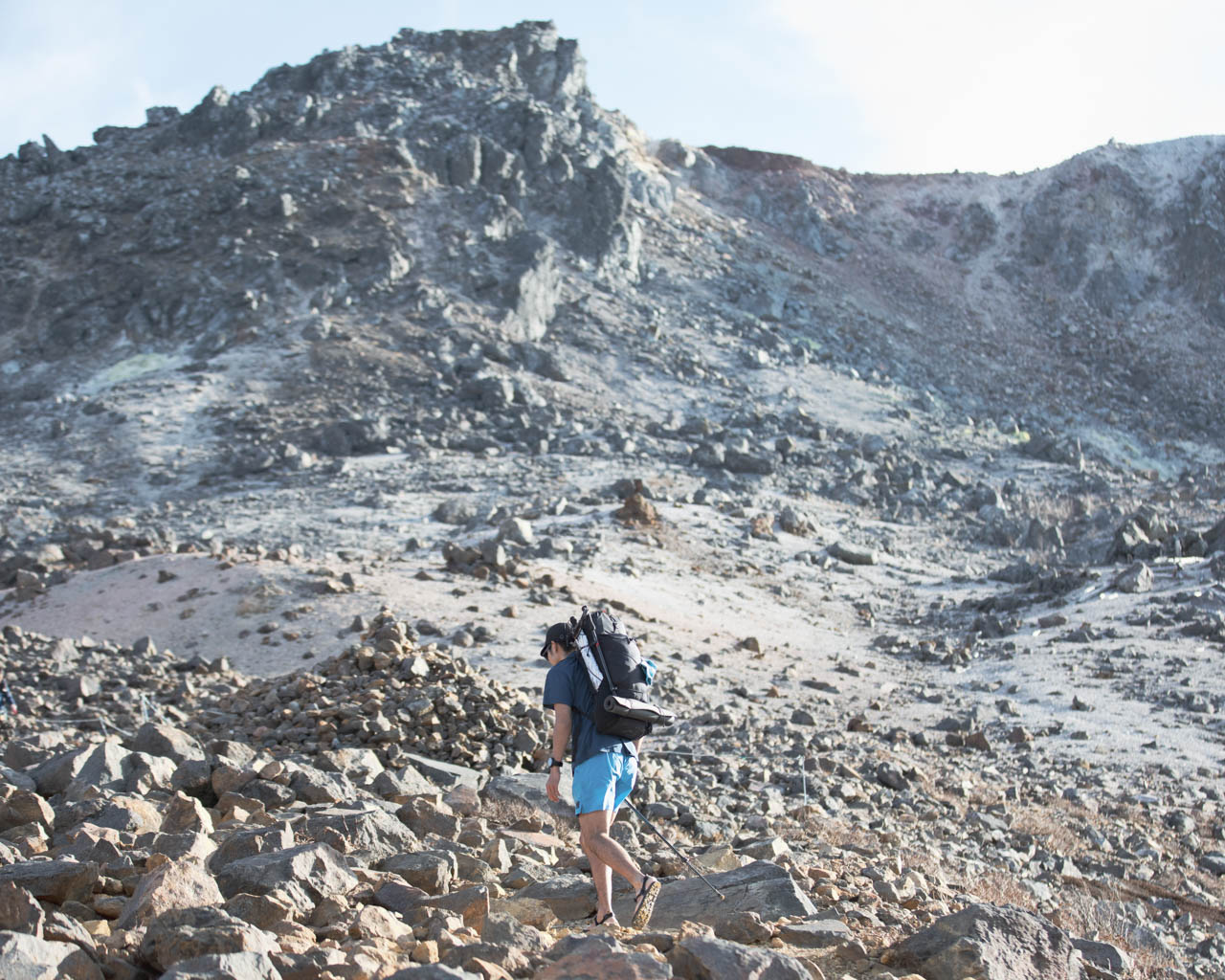
Highly expandable
The MINI has a long roll top with a total capacity of over 30 liters in size M, and 32 liters in L. You can be creative and use the top strap, bungee cords and bottom attachment loops to carry even more.
Anatomy of MINI
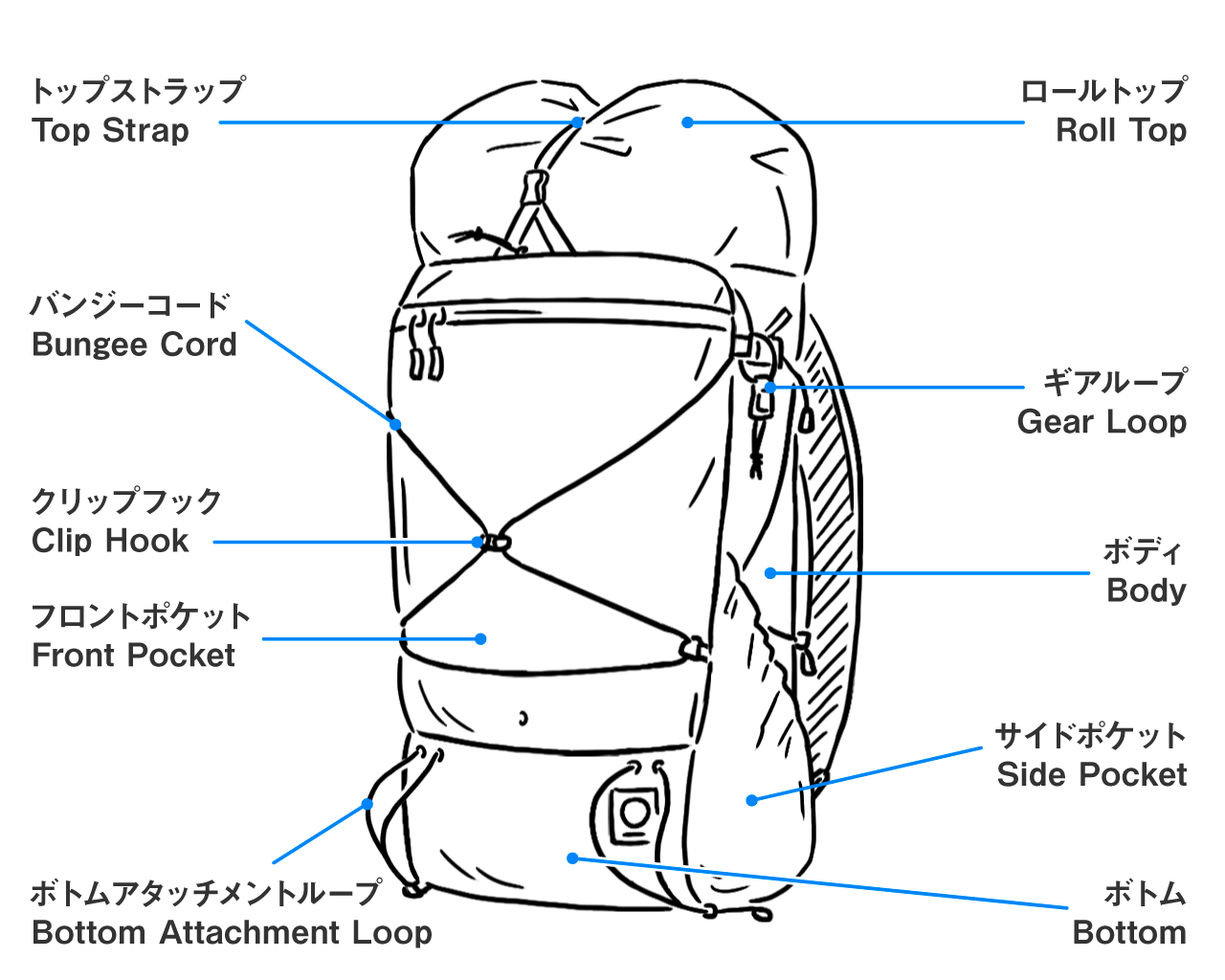
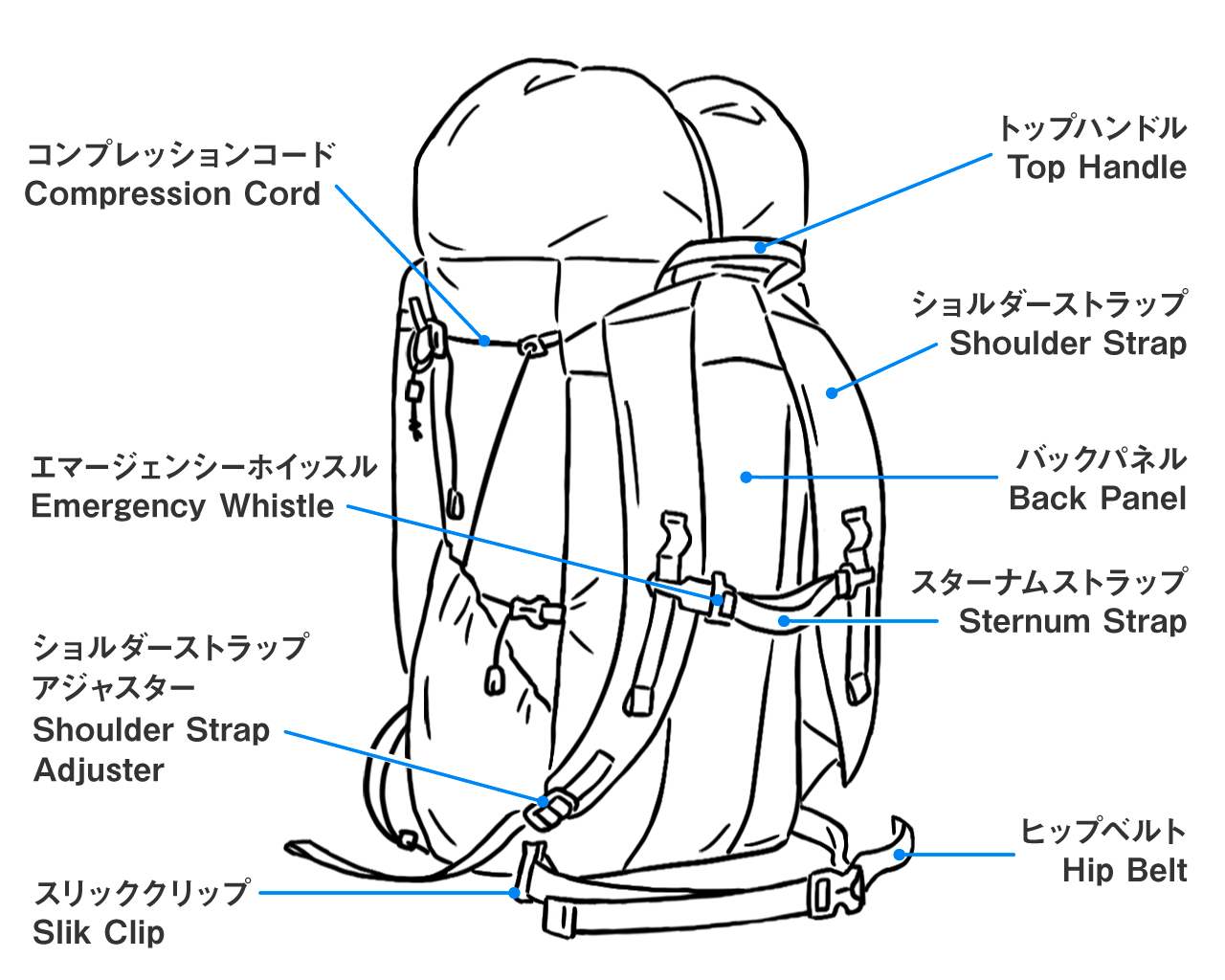
Close: Grip the red tab and pull the drawstring tight.
Open: Hold both the red tab and the red loop, then pull apart.
Made from durable Ultra Stretch fabric, each side pocket has the capacity for two 500 ml bottles. For easier access while walking, loosen the shoulder strap to bring the pack lower.
The front bungee cord can be unclipped in a single action.
A light sleeping pad can be attached to the bottom attachment loops. It can also be fixed vertically where branches are dense for easy walking.
The gear loops and bottom attachment loops can hold trekking poles without obstructing the use of the front and side pockets.
To fix an ice ax, slide the shaft into the bottom attachment loop and rotate it so the spike faces upwards, then fix the shaft with the gear loop.
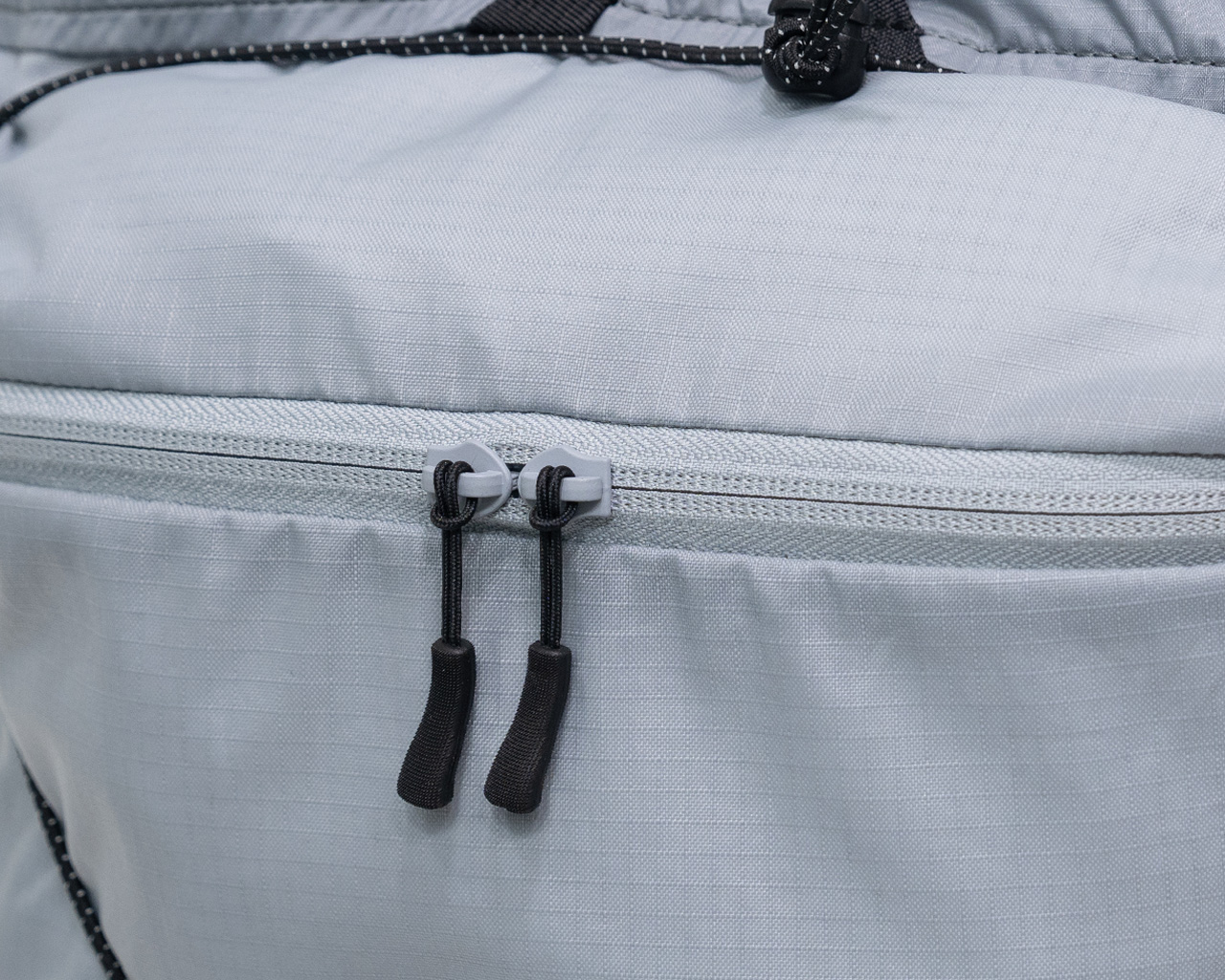
YKK #5 coil zipper moves smoother than the water repellent zipper.
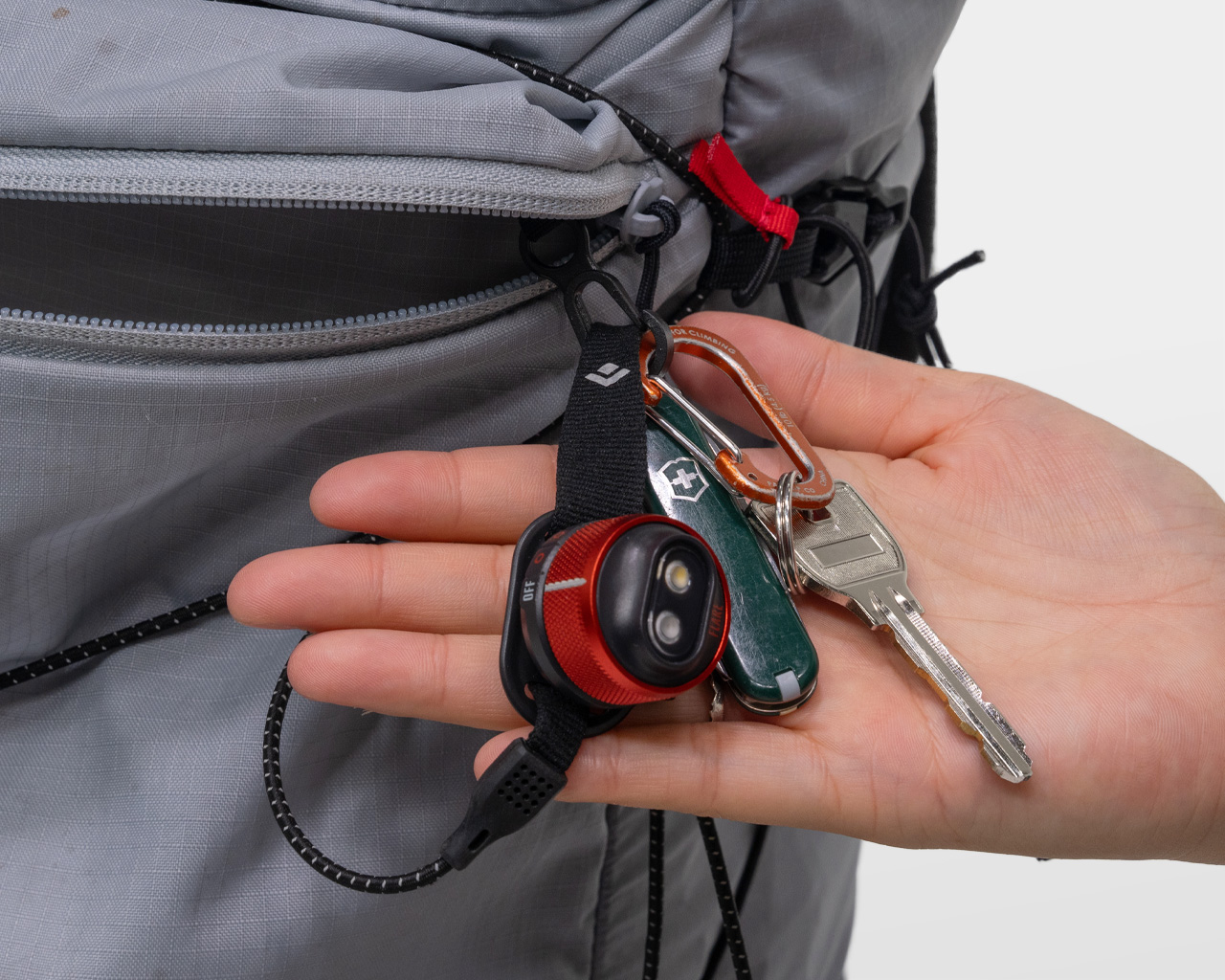
The front pocket has a key hook, where the headlight and multi-tool can be attached.
After packing everything, draw the compression cords on both sides to keep the items closer to your back, increasing the stability.
The sternum strap can be easily opened/closed with a single hand when your other hand is busy.

The sternum strap buckle includes an emergency whistle.
If you intend to use MINI2 for fastpacking or running, an accessory hip belt can be attached. Please note that the hip belt is solely for better stability, not for load distribution to your waist. The Slik Clip can be easily released by pushing the arch part.
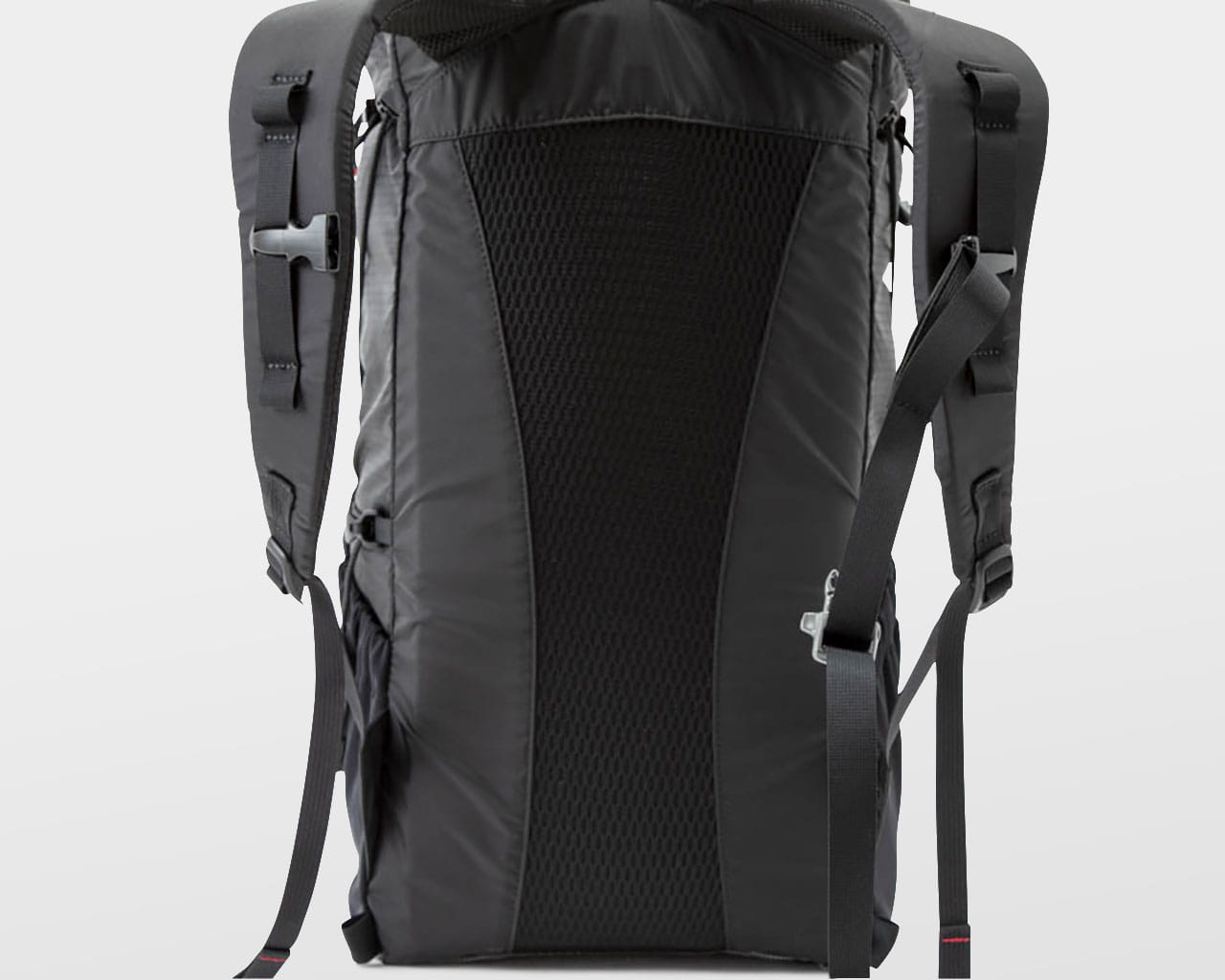
The back uses a mesh material for better grip and stability.
Integrated Minimalist Pad
We have included a Minimalist Pad (H45cm x W90cm x D0.5cm / 43g) in the back of the MINI. The Minimalist Pad is removable and can be used as a sleeping pad or an emergency pad to keep you warm.
How to carry
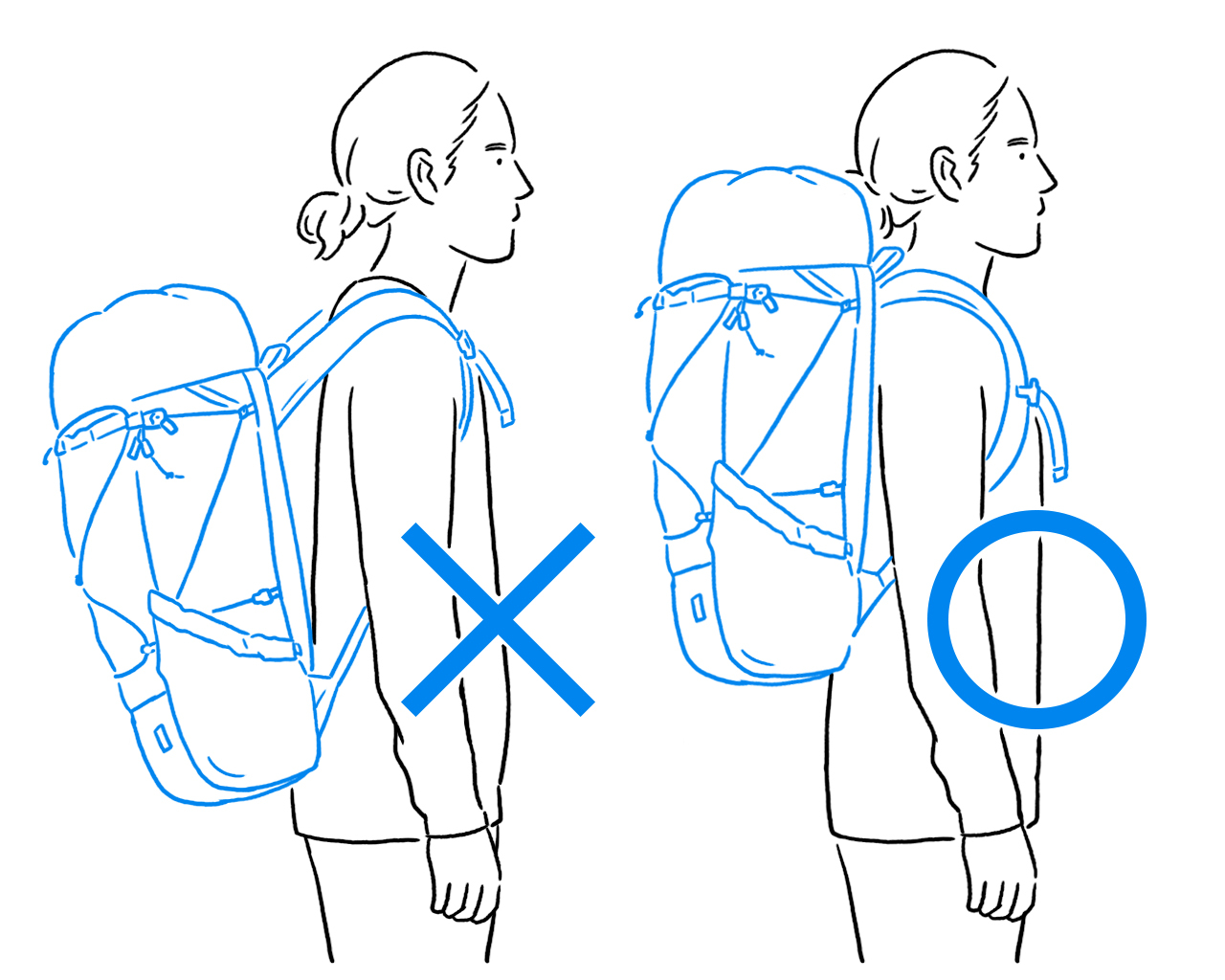
Please make sure to position the MINI as high as possible in the upper part of your back.
It is designed to carry up to approximately 8kg total weight. The shoulder straps are designed to comfortably distribute the load in the upper part of your torso. By shouldering the MINI in this way, you will carry the backpack entirely using the upper part of your torso comfortably. If you intend to use MINI for fastpacking or running, an accessory hip belt can be attached. Please note that the hip belt is solely for better stability, not for load distribution to your waist.
Options
We offer a number of options to expand the features and capacity of your MINI.
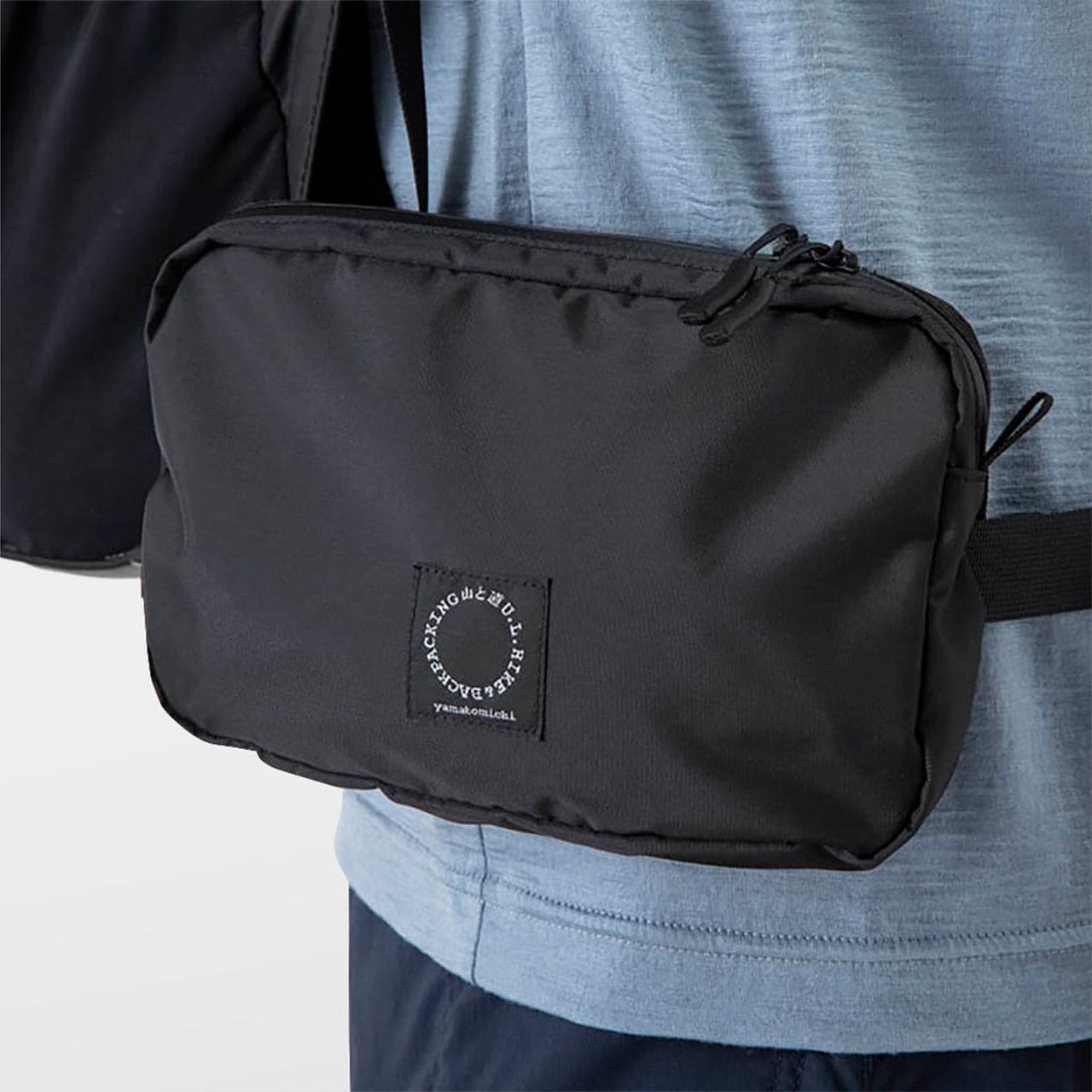
It can be attached to the removable hip belt. This is convenient for stowing keys, valuables, and other items frequently used during hiking.

It can be strapped onto the top of the MINI. This will add another nine liter capacity that is convenient for carrying something you would prefer to store separately from the main compartment such as a wet tent, rainwear, or an extra couple of days’ worth of food.
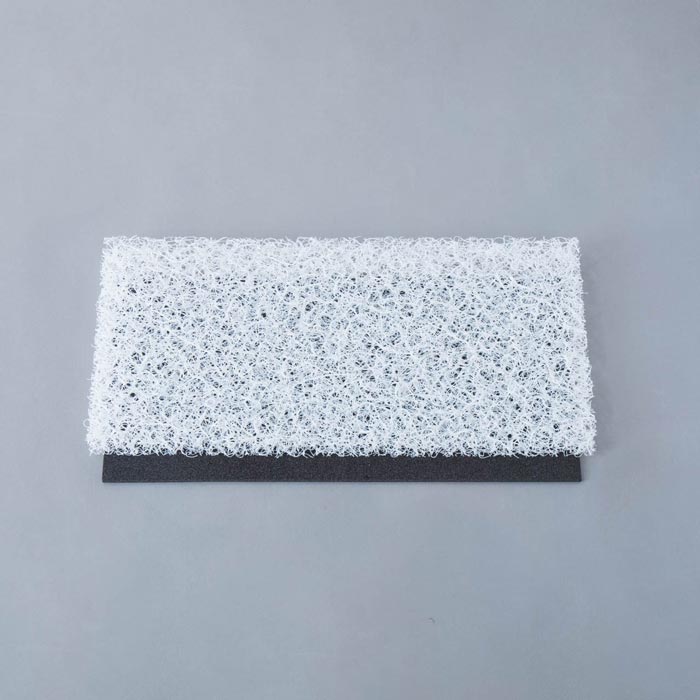
Our Yamatomichi Minimalist Pad is installed in the MINI’s back panel. If you feel it is too warm on your back during the summer, consider switching it for our Breathable Pad that offers superior ventilation and cushioning.
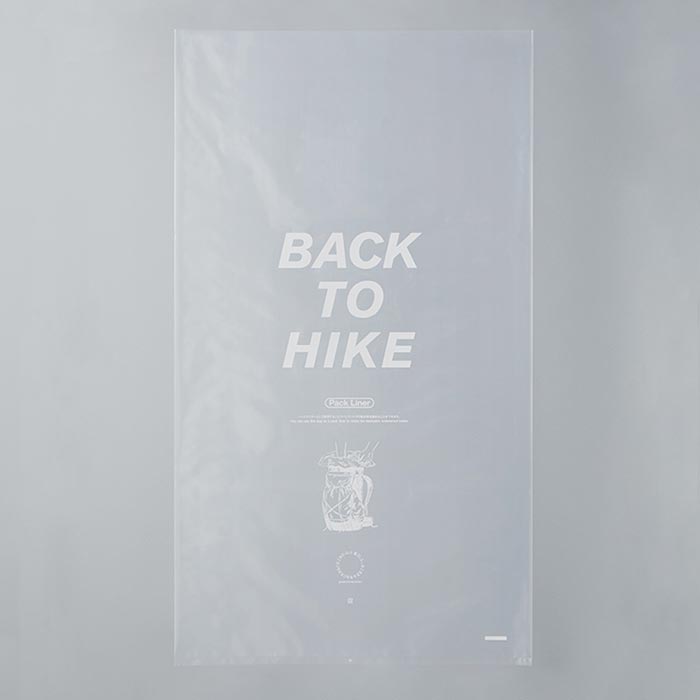
The MINI comes with a transparent plastic bag which can be used as a water-resistant pack liner. (Also sold separately)
Material
Pertex®︎07RS-PC
The main body features a proprietary 70-denier fabric developed in collaboration with Yamatomichi and Pertex. Its optimal weave structure and soft, impact-dispersing design achieve both the lightness essential for an ultralight backpack and strength that surpasses standard nylon. Paired with a durable, hydrolysis-resistant polycarbonate coating, the fabric offers enhanced durability and long-term performance.
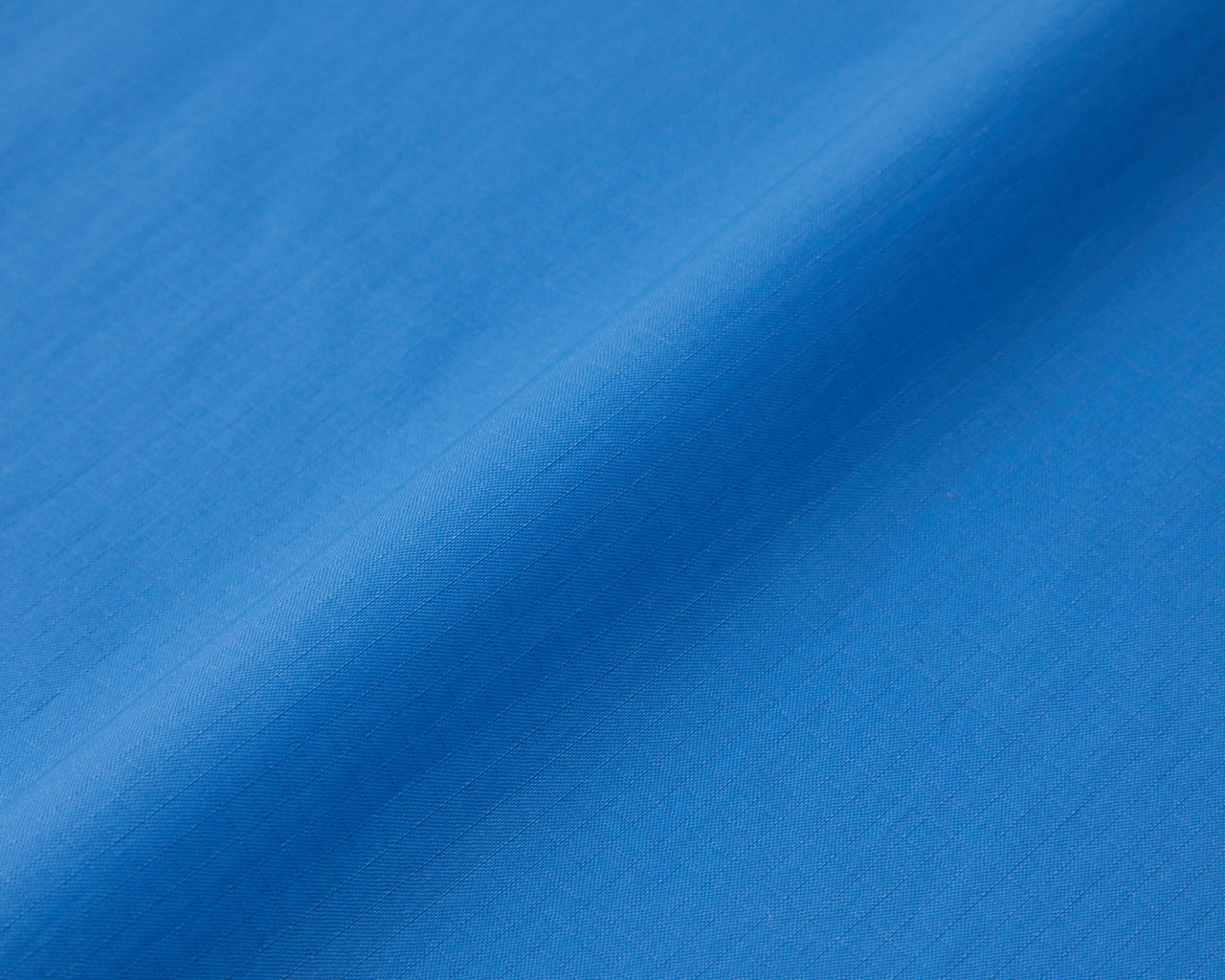
Pertex®21RS-PC
We use a custom 210-denier fabric co-developed by Yamatomichi and UK-based textile brand Pertex. The fabric’s special weave and soft, impact-dispersing design provide both the light weight you expect from an ultralight pack and strength that goes beyond standard nylon. It’s also coated with a hydrolysis-resistant polycarbonate for added durability.

Backpack material comparison
As of 2025, we compared the weight and tear strength of the main fabrics used in our backpacks. Fabric weight refers to the weight per square meter, while tear strength indicates the amount of force required to tear the fabric.
Among these materials, Pertex07RS-PC and Pertex21RS-PC are not as strong as fabrics made from 100% UHMWPE (Ultra High Molecular Weight Polyethylene), such as TECHNO FORCE STEEL or Ultra 200. However, compared to other fabrics made from 100% nylon, they offer an excellent balance of lightness and strength.
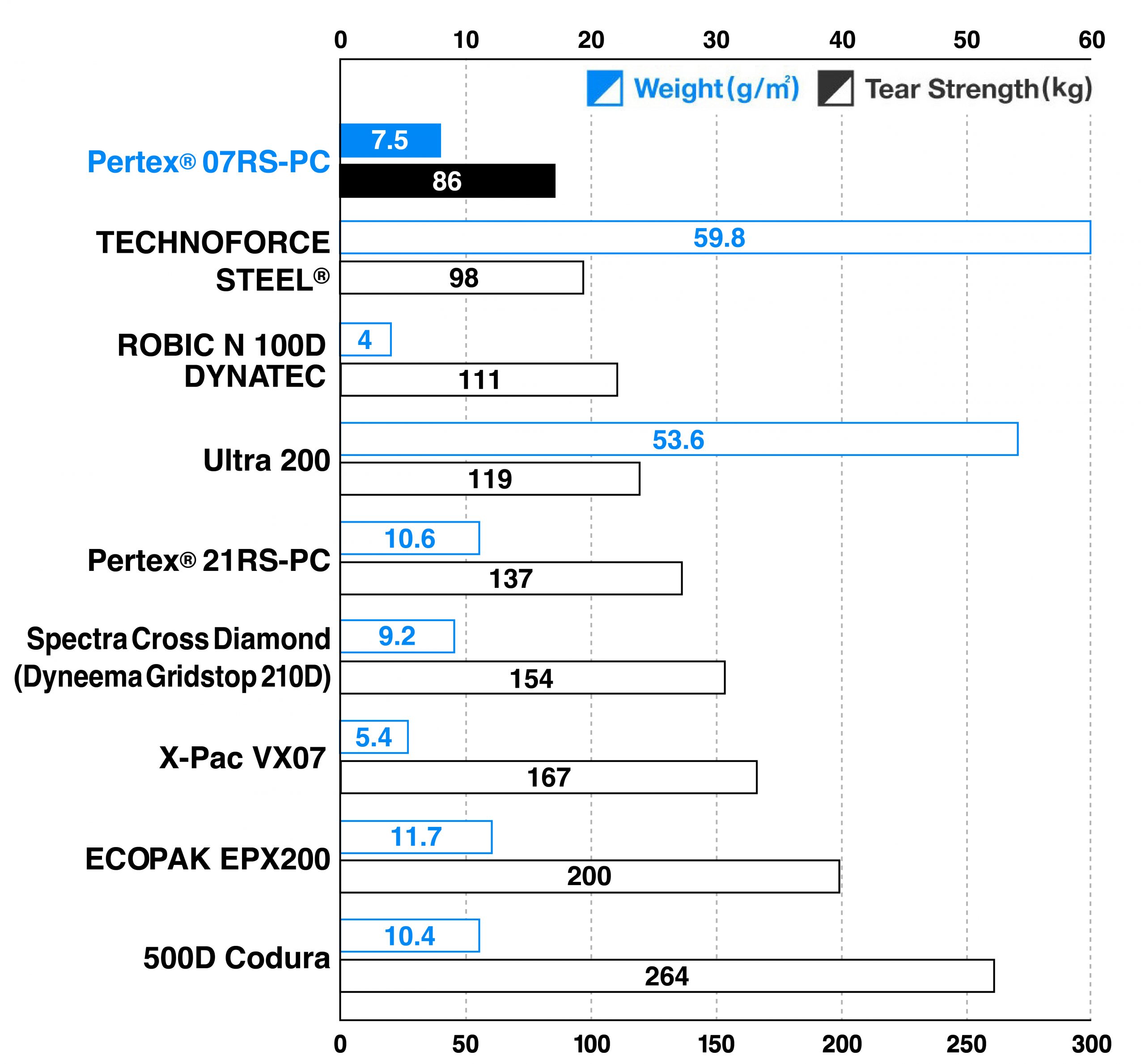
Fabric Strength Relative to Weight (kg per g/㎡)
To highlight the relationship between weight and durability, the materials are ordered by tear strength per gram of fabric.
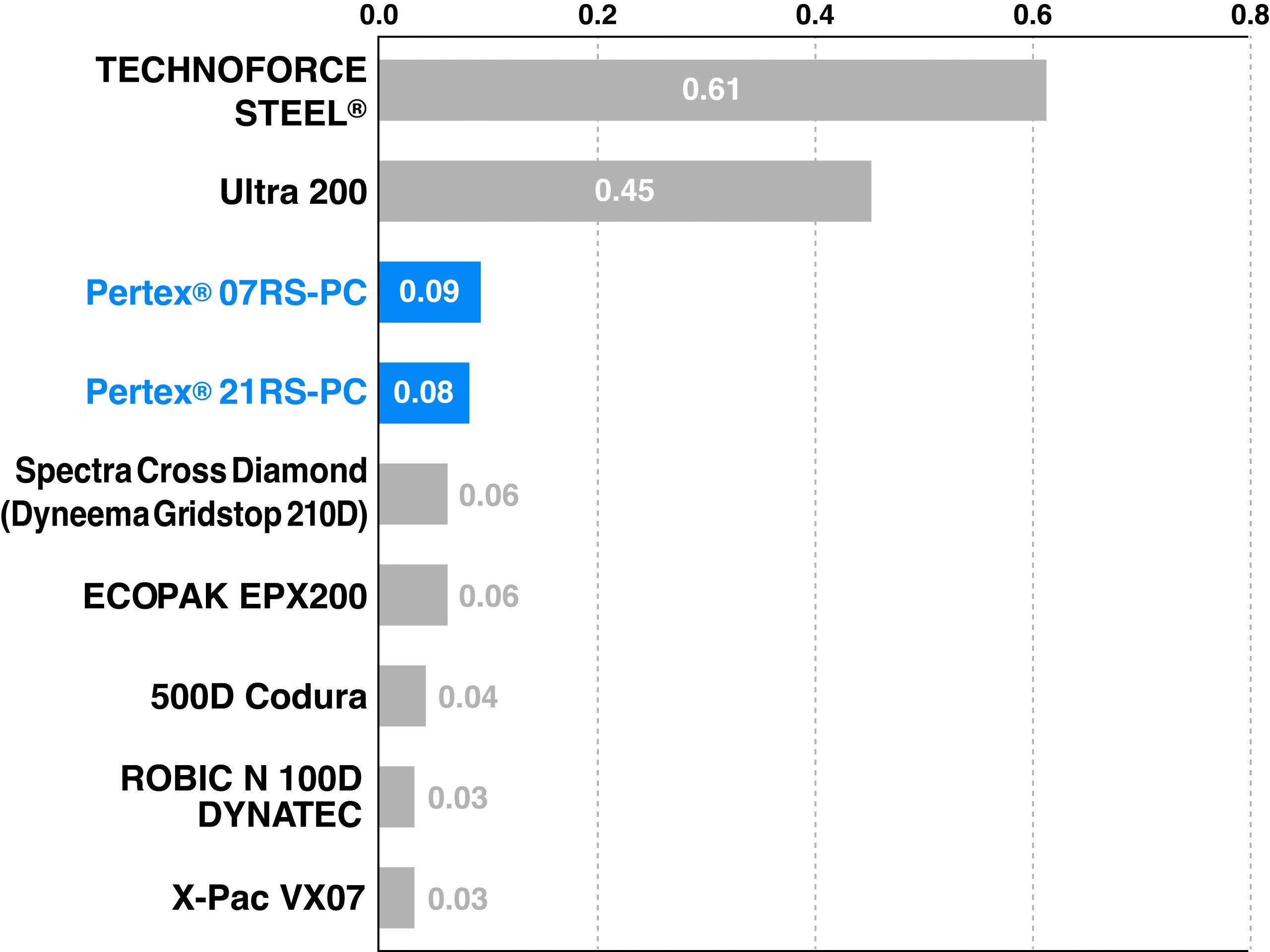
Why Nylon 6—and Its Unique Performance
Pertex has worked primarily with nylon 6 since its founding, building a deep understanding of the material’s characteristics. While they do use nylon 66 when the application demands it, their fabric development is always based on selecting the right material for the intended function.
Nylon 66 is typically known for its high strength and abrasion resistance, but it tends to be stiff and more prone to sudden failure under stress. Nylon 6, by contrast, offers greater flexibility and can stretch slightly under load, allowing it to disperse impact more effectively. For this project, we chose to embrace the natural suppleness of nylon 6 and designed a fabric that is both lightweight and exceptionally strong.
A balanced weave structure for enchanced durability
To take full advantage of nylon 6’s flexibility, we carefully considered the fabric’s weave. While tighter weaves typically yield higher strength, they can also become overly rigid and more prone to tearing under localized stress. Instead, we adopted a slightly looser “open” weave structure that allows the fabric to better absorb and distribute force.
We also used the same denier of nylon 6 yarn for both the vertical and horizontal threads, giving the fabric consistent strength in both directions. This uniformity helps distribute pressure evenly across the surface and prevents stress from concentrating in a single area.
A coating designed to last
Most nylon backpack fabrics use polyurethane (PU) coatings to improve water resistance and durability. But PU is prone to breaking down over time, especially with exposure to moisture and sunlight, often resulting in peeling or stickiness.
To overcome this, we used a polycarbonate coating—a tougher, longer-lasting option also found in car interiors, architectural panels, and industrial protective gear. It’s far more resistant to UV and humidity, making it a great fit for long-term outdoor use. That said, polycarbonate is more difficult to work with and more expensive than PU, which is why it’s still rarely used in textiles.
Technoforce® Steel
The fabric made from 100% ultra-high molecular weight polyethylene (UHPE) is exceptionally lightweight yet strong; light enough to float on water yet theoretically capable of supporting around 20 tons with just a 10 mm diameter. This high-density woven fabric offers world-class tear resistance, tensile strength, and abrasion resistance. Its hydrolysis-resistant PC coating on the back further enhances long-term durability, with “jungle tests” showing no significant changes after 10 years. UHPE does not retain water, preventing the fabric from becoming heavier when wet.

58kg
ECOPAK EPX200
The ECOPAK EPX200 is a multi-layered material consisting of 200 denier polyester and diamond-patterned blue polyester cross ply, combined with 70 denier ripstop on the back. It is made from 100% recycled polyester, offering excellent strength and waterproofing properties.

Size guide
| Size | M | L |
|---|---|---|
| Weight kg |
42~69 | 67~85 |
| Height cm |
150~175 | 170~190 |
| Back Length cm |
45~54 | 54~57 |
We offer two sizes of the MINI2. In general, we recommend the larger L size if you are over 175cm tall, but as all people are different we recommend you try out the two different sizes before you buy if at all possible.

- The length of the shoulder strap is the straight line from the base of the strap to the end of the core material.
- Please refer to the ONE product page for more information on how we measure the length of the back of our backpacks.
Notes before use
Notes before use
Fabric water resistance
While the fabric used is highly water-resistant, the backpack is not waterproof. We recommend using a waterproof pack liner or a rain cover.
DEET
Insect repellents containing DEET can degrade the coating of the fabric components, so please do not let them come into contact with this product.
Instructions
Care instructions
- Hand-wash only. Do not machine wash.
- Submerge the product in lukewarm water with a correct amount of neutral detergent, and hand-wash it.
- Do not bleach. Do not use fabric softener.
- Remove any optional parts such as pads before washing.
- Wash off any noticeable stains or smudges with a washing brush or soft sponge.
- Rinse well so that no detergent remains.
- Drain the backpack with the mouth down. Keep dry in a shade.
- Store in a dark, well-ventilated place.
- Do not iron.
- Hand-wash the pad gently, rinse well and keep dry in a shade.
Care instructions page
For detailed tips on how to wash, store, and take care of your gear, visit our Care Instructions page.
How to wash our backpacks
Care instructions for Technoforce® Steel
Technoforce® Steel with hydrophobic properties is naturally a stain-resistant fabric, but due to its white color, dirt becomes noticeable. Here are care methods for three common types of stains.
The longer a stain remains, the harder it is to remove. Clean as soon as possible to keep clean.
Dirt stains
- Spot Cleaning
Gently scrub the stain using laundry detergent and a laundry brush or toothbrush.
*Note: Small particles of sand that have entered the gaps in the fabric may remain.* - Rinsing
Rinse the cleaned area with lukewarm water. Make sure to rinse thoroughly with running water to remove all detergent. - Drying
Hang to dry completely in a well-ventilated, shaded area.
Food stains
- Spot cleaning
Use dishwashing detergent that is effective against grease stains, and gently scrub the stain with a laundry brush or toothbrush. For stubborn grease stains that cannot be removed with dishwashing detergent, apply make-up remover to get the grease to lift, then gently scrub using laundry detergent.
*Note: Stubborn grease stains with strong pigments, such as curry, may leave a slight residue.* - Rinsing
Rinse the cleaned area with lukewarm water. Make sure to rinse thoroughly with running water to remove all detergent. - Drying
Hang to dry completely in a well-ventilated, shaded area.
Oil stains (eg: bicycle chain oil)
- Spot cleaning
Apply make-up remover to lift the grease and dirt, then scrub gently with a laundry brush or toothbrush using laundry detergent.
*Note: Small particles of sand that have entered the gaps in the fabric may remain.* - Rinsing
Rinse the spot-cleaned area with lukewarm water. Make sure to rinse thoroughly with running water to remove all detergent. - Drying
Hang to dry completely in a well-ventilated, shaded area.
Payment
- We only accept payment by credit card. We currently do not accept payment via bank transfer from overseas accounts.
- We accept the following Credit Cards: Visa, Master, American Express, and JCB.
- To download your receipt, please click the link included in the Dispatch Notice, which we will send by email as soon as the items are dispatched.
- Bank transfer is only availble for those that own a Japanese bank account.
Delivery
- Order Confirmation will be sent after the order.
- The items will be dispatched within 3 days after the payment is confirmed.
- The dispatch notice will be sent by email as soon as the items are dispatched.
- The delivery may be delayed by unforeseeable reasons such as natural disasters and other logistics issues. We appreciate your patience and understanding.
- We cannot ship multiple orders in one package due to how our delivery system is currently set up.
- We will ship to regions in North America, Oceania, and Europe (excluding Russia) via DHL. For regions in Asia, the Middle East, Central and South America, Africa, and Russia, we use EMS (International Express Mail Service) for shipping.
- Shipping fees and delivery times vary depending on the shipping destination as well as the size and weight of the items.
Size exchange
- Overseas customers who need to change the size of their order, should note that the time needed for shipping will vary greatly depending on your country of residence.
- We only accept exchanges when the item is unused (except for fitting).
- If you wish to exchange the size of the item, please contact us within seven days of receiving your order.
- Exchanges can only be made for the same color in a different size.
- If the size you wish is out of stock, we will suggest a different color.
- If the product is out of stock, we may simply have to ship the item back to you.
- All shipping costs to be carried by the customer.
- We will only send the exchanged item to you, upon receipt of return shipping cost via PayPal.
- Please be aware that some countries charge customs duties depending on the price of the item.
- We are unable to answer any questions on local customs. Please contact your local customs bureau.
Repair
We accept repairs for all of our Yamatomichi products. For inquiries on repair services including patching the holes, repairing with extra components, or fixing the items damaged over time, please feel free to contact us from the “Repair” section of the SUPPORT page.
Repair Tape
- For temporary repair, please keep the repair tape in your emergency kit.
- The repair tape should be patched up on both the front and back sides of the fabric. The tape must be larger than the damaged or torn part of the fabric.
- If you round the edges of the patch, it will last longer.
Replacement parts
No worries if you lose or damage any included belts or straps—we also offer replacement parts for sale.
 Hip Belt for MINITW$ NaN31.2gRESTOCK ALERT
Hip Belt for MINITW$ NaN31.2gRESTOCK ALERT Sternum StrapTW$ NaN21gRESTOCK ALERT
Sternum StrapTW$ NaN21gRESTOCK ALERT
